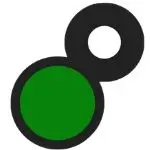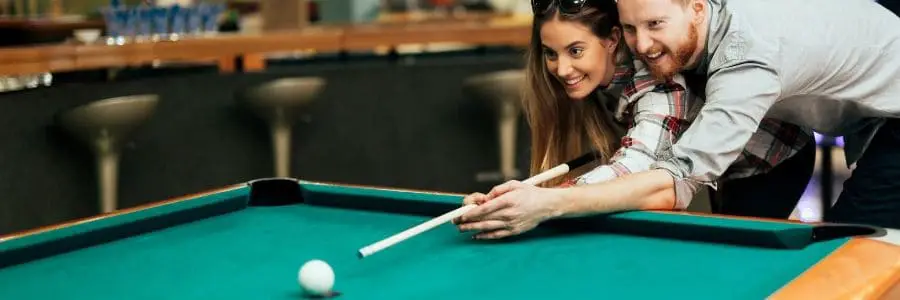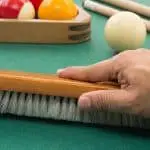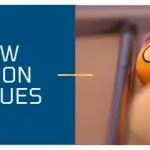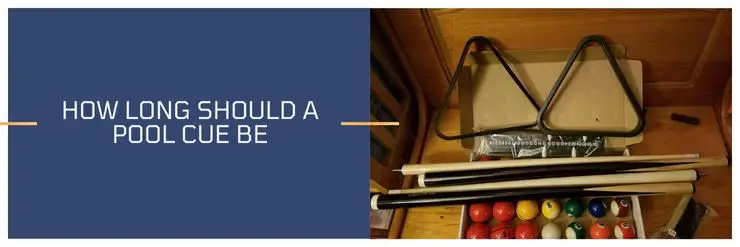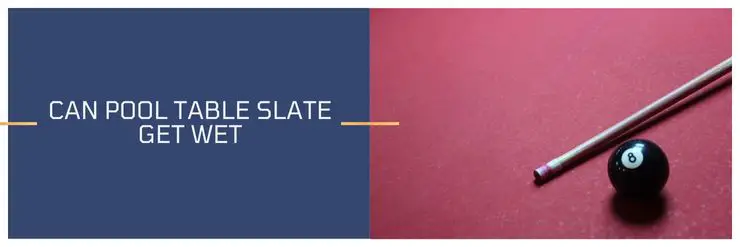Are you wanting to learn how to hold a pool stick for beginners? the best stance in pool, how to aim or even how to put spin on the cue ball?
Here we will explain all that and much more!
How you hold and aim with a pool cue makes a huge difference and if held correctly, can drastically improve your game. Of course, you can rely on your instincts but a well-practiced correct way to hold the cue using a good bridge technique will eventually win over.
For someone who’s just starting, holding the pool stick like a pro can be quite vexing. Learning how to hold the cue shaft properly is a skill that you can learn that will make playing so much more fun.
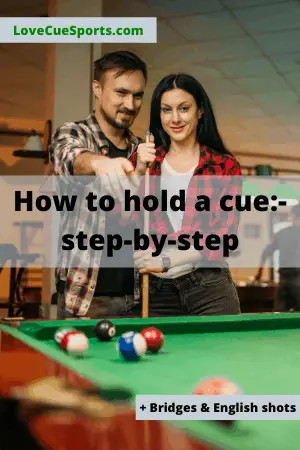
Coming here to learn how to hold a cue, is the right first move! This is a completely beginner friendly.
We will look how to hold a pool cue for beginners. We will also cover holding and gripping a cue, bridging techniques as well as a pool-shooting stance and some of the basics of cue-ball control and where to hit the ball. This is a full step-by-step beginners guide so you can fast track your learning.
- Step-by-step guide on how to use and hold a pool cue
- Correctly hold a cue: The basics
- Step 1: Grip the cue at your waist level with your strong hand
- Step 2: Lower your torso in the direction of the table
- Step 3: Use your other hand for bridging and covering the tip of the stick
- Step 4: Hold the stick with firmness and concentrate on your shot
- Step 5: Position the shaft and strike the cue ball
- Where to place my grip hand on the butt of a pool cue
- Where is the balance point on a pool cue
- Bridging techniques
- Open Bridge
- Closed Bridge
- Cue ball control (spin) on the ball?
- Conclusion
Step-by-step guide on how to use and hold a pool cue
If you’re like most other first-timers, you’ll invariably grip the shaft incorrectly as you’ve no idea how to hold it perfectly. But if you’re sincere and keep your focus, you’ll be able to master the technique gradually. Before I make you aware of the basics of ‘how to hold a pool cue for beginners’ let me tell you why it matters.
The pool shaft or stick is the most important component of any pool game, be it billiards or pool or snooker, you need one and you need to hold it right.
So, it is only when you hold a pool cue in a proper way that you can focus entirely on the game. If and when you hold a pool cue properly, you’re able to concentrate on how to strike the cue ball (the white ball) and, hopefully, pot your object ball. On the other hand, if you make the slightest error in holding the cue the right way, your chances of making a perfect shot are reduced.
It may not seem that important to hold a cue correctly, but I promise you its vital in progressing to the next level. If you show a keen interest in the game then it’s always best to follow best practices to improve. Having a solid foundation allows you to build upon it and improve your overall game. So, I’ve broken the steps down for you below.
If you want to practice playing without others watching, you can follow my 1 player pool games.
Follow these steps for the best way to hold a pool stick:-
When learning how to hold a pool stick correctly, there are a few aspects to consider:
- The grip with your stronger hand on the butt of the cue.
- Your bridge with your weaker hand.
- Aiming the cue ball to hit an object ball.
- Your position and stance and striking the cue ball.
Going down to take a show is a consistent motions, a 1 second job and you are in position.
The time for aiming and being comfortable to take the shot may last between 3 seconds to 20 seconds until you strike the cue ball.
How to hold a pool stick – Follow along step by step:
- Choose the hand that you think will offer you greater dexterity in striking, i.e., your strong hand. I’m right handed so I will grip the butt of the stick (the back of the cue) with my right hand (Find out more on where and how to grip here)
- Gripping the stick at the level of your waist, bend over the table, and make a bridge (explained below) with your weaker hand (mine is my left)
- To make a bridge with your weaker hand, place your hand flat down on the table 4-6 inches behind the white. Raise you knuckles slightly on your thumbs side to create a support between your thumb and index finger for your cues shaft (front of the cue) to slide on. (more on the different bridge techniques here)
- Gently hold the stick’s butt with your strong hand and guide the cues shaft (the front of the cue) back and forth over your bridging weaker hand, this is called feathering, its a way of “feeling” the shot.
- With the center of your chin slightly above or even rested on the cue, gaze down the cue towards the center of the cue ball.
- Your weaker hand should be stretched in front of you, supporting the shaft and your stronger hand should be genterly gripping the cue – The cue should be pretty much level with your stronger arms elbow at a 90 degree angle and your forearm moving the cues butt back and forth, feeding the shaft back and forth over your bridging weaker hand.
- Your feet will be slightly apart, facing the table, comfortably. Adjust a foot to be closer or further away from the table to be more comfortable.
- When comfortable with your stance and you know the object ball you want to hit. look down the cue straight, aim to hit the white ball in the center and for the the white ball to hit the center of the object ball. Bring your hand holding the butt, back slightly, bending the elbow and when ready, strike the white with enough force to hit the object ball (Some basic aiming and controlling shots you can do)
While picking up the ropes and mastering the skill to hold a pool cue, you need to keep in mind two vital aspects- the fundamentals and the bridging methods of techniques, both are equally important.
You’ll need the cue fundamentals to know how to hold a cue correctly. Your stance, your grip and your aim.
The fundamentals are all lost if you cant bridge correctly. To hold a cue in the right way is important to know but equally important is knowing how to bridge, allowing your cue to “rest” on your bridging hand.
Correctly hold a cue: The basics
I’ll give you a detailed step-by-step rundown on what to do and things to keep in mind while doing them – don’t worry, I’ll make it easy for you, you’ll hold a cue like a pro in no time!
Check out Efren Reyers from his 2014 CSI Invitational 8-Ball championship see how the pros how to hold a cue. video below:
Step 1: Grip the cue at your waist level with your strong hand
Lower the pool cue to the level of your waist and hold the shaft’s butt using your strong hand. You may be wondering if there’s a way of finding out if you’ve positioned your good or strong hand on the correct section of the cue; yes, there’s a way. Try to locate a taped spot on the stick’s butt side.
Then, move your good hand bit by bit away from the tape. See to it that there is a span of nothing less than 4-5 inches between your strong hand and the tape. Also, make sure your strong hand is perfectly at a perpendicular (i.e., at a 90˚) with the cue.
You’ll know that you’re gripping the cue properly when it is at a right angle with the good hand.
What you need to keep in mind at this stage:-
- Always hold a cue gently instead of wrapping your fingers tightly around it
- Ensure that your body is in alignment with the cue ball; you’ll be able to take shots correctly if the cue ball and your frame are perfectly aligned
Step 2: Lower your torso in the direction of the table
At this stage, focus your gaze on the playfield and think deeply about how to make the opening shot with perfection. You’ll need to lower your torso or upper body as much as possible in the direction you’re facing the table. You’ll need to drop your torso down while maintaining your strong hand’s grip on the butt with the other hand’s palm holding the tip.
However, you’ll need to be extremely careful to avoid bridging the shaft’s tip with the other hand. If you become even slightly inadvertent, your other hand may slip, and you might end up striking the cue ball.
What you need to keep in mind at this juncture:-
- Try to keep yourself fully steady so that you can focus on how to execute the first shot
- While keeping yourself stock-still, ensure that you bend your legs somewhat instead of straightening them
Step 3: Use your other hand for bridging and covering the tip of the stick
This is the most crucial step when it comes to gripping the shaft correctly for taking the shots. Now you’ll need to open the palm of your other hand, bridging the tip and position it on the play area just behind the cue ball. The thumb rule is to place your palm at a minimum distance of 4-6 inches away from the cue ball.
Next stroke the shaft’s tip with your index finger and the thumb after putting the tip in between the two fingers. This technique of stroking is known as an open bridge, but you can use various other bridge techniques. Nevertheless, the open bridge method is the most popular cradling technique.
What you need to keep in mind at this stage:-
- While you open your palm to place it on the table, see to it that you keep all the five fingers as much as apart from each other
- Now move the shaft little by little to comfortably position in between your index finger and the thumb
- You’ve now created an open bridge. Ensure that you maintain this position. If your fingers wobble or shake even a bit, you’ll disturb the open bridge position, and consequently, you may not be able to take a perfect shot.
Step 4: Hold the stick with firmness and concentrate on your shot
Maintain a steady posture, make a mental note of the object balls you wish to hit, and finally figure out how to strike the cue ball with the shaft for achieving this. Try to map out the shot you wish to play mentally.
What to keep in mind at this stage:-
- Grip the shaft, but not too hard. you want to cradle it in your strong hand
- Bring the shaft in line with the cue ball in a manner that you can view the object ball or balls when you take aim
Step 5: Position the shaft and strike the cue ball
After you’ve made up your mind on how to strike, move the shaft deftly backward and forward so that you feel confident in taking the shot. Readjust your striking stance if you don’t feel confident. Maintain a firm posture and hit the cue ball after moving the stick forward and backward several times.
What to keep in mind at this stage:-
- Once you’ve made the shot, remain in that position for a while. This position will give you a good idea of whether the stance is ideal for you for taking original shots
- Create a bridge position in a calm and comfortable manner
Where to place my grip hand on the butt of a pool cue
Just like with any other sport, there are a few techniques you can use to grip a pool cue and improve your accuracy. Here are a few tips:
Where to grip the butt for different shots
- Keep your grip loose and relaxed. You don’t want to be squeezing the cue so tight that you’re shaking with tension. The cue should feel well balanced in your hand.
- For normal shots, your hand should be in the center of the wrap. This provides good balance and control.
- For shots that require more “touch” and accuracy, try moving your hand forward on the wrap. This will give you more power and control over the cue ball.
- For shots that require more power, try moving your hand back on the wrap. This will give you more leverage and power behind your shots.
With a little practice, you’ll be sinking balls like a pro!
Where is the balance point on a pool cue
Finding the balance point of a cue is something most people don’t bother doing but this will help instruct you where to place you grip hand correcly the pool cue.
To find a pool cues balance point you can follow these simple steps:
Find any pool cues balance point
- Balance the pool cue on your index finger. Remember where your index finger was when the cue was balanced. This will be the cues balance point
- Grip the cue about 6 inches behind the pool cues balance point (closer to the butt end)
- Your grip hand may need to be adjusted slightly if you are particularly tall (Move your grip hand back slightly) – Likewise, if you are particularly short, you may need to slightly adjust your grip hand (move your grip hand towards the balance point slightly)
Following this process with ensure you hold the cue correctly at all times.
Bridging techniques
Open Bridge
The bridging technique, the most popular of all pool cue cradling tips, can be mastered easily with regular practice. Follow these steps:
- Place the palm of your hand holding the cue tip on the felt, and try to spread out the fingers
- Grip the butt of the shaft with your strong hand
- Try to position the stick’s tip slowly in between your index finger and thumb
- Now slowly raise your thumb so that your index finger can comfortably cover the cue tip
- You can also use your middle finger if you feel it’ll offer you a better grip
Closed Bridge
Once you are comfortable with the open bridge technique, you can graduate to the closed bridge. A good number of professional players use the closed bridge technique for making shots.
- Place your other hand (the non-dominant one) on the play area after making a fist
- Slowly open your little finger, ring finger, and middle finger and spread them apart on the table
- Place your thumb underneath the index finger after opening the latter
- Create an imaginary circle with your index finger by gliding it above the thumb
- Keep a mental note of the circle and position the cue within it
- Make forward and backward movements several times with your index finger and thumb to make them flexible
After you’ve mastered both the open and closed bridge techniques, you can practice two other cradling methods used by many pool players; the mechanical bridge and rail bridge techniques.
Cue ball control (spin) on the ball?
Now that you are starting to master how to hold a pool cue, how your stance should be and how to bridge correctly you can move to the next step. This is slightly more advanced, but important to know if you want to improve your overall game.
I want to talk to you a little about cue ball control and how to put spin on cue ball. Without some form of cue ball control, you can’t improve, so its important to get to grips with the basics. Don’t get me wrong, this is a long learning process that won’t happen overnight, but with continued practice, it will slowly become a natural part of your game.
Some of the more basic ways you can control a cue ball are by:

top spin – hitting the top of the cue ball will put forward spin on the ball. Once the cue ball has made contact with the object ball, it can continue on its trajectory.
Draw – Also know as back-spin, works similar to top spin. Draw is achieved by hitting below the midpoint of the cue ball, towards the bottom of the ball. when struck, it creates back-spin, when the cue ball strikes the object ball, it will reverse the directional spin and return backward.
English – left or right english is applied when you hit the cue ball to the left or right of center, causing the ball to spin. By applying english to the cue ball it will change the direction of the object ball once struck and cause a wider angle than it would without english, this is called the “throw effect”. Using english can cause the white ball to stray from its aiming line, this is called deflection. It can also be applied when you want to control the cue ball of the rails too.
More often than not, you can strike the balls to good effect by resorting to frontward and backward spins. However, there could be situations when forward or backward spins may not suffice for making good shots. During such occasions, you may have to change the shot’s angle off of a rail for taking a perfect shot.
And this is when left and right spins (variously referred to as english) can come to your aid. You can apply a right spin or left spin on the cue ball for altering its direction off of the rail. English (left or right spins) comes in handy when you need to:-
- Play more rails for getting a comfortable striking position
- Create superficial or deeper angles off of the rail
- Veer off or turn sharply to find your way through another ball
Conclusion
If you follow the steps listed above to hold a cue, you’ll surely be able to master the skill of gripping the cue properly. Remember, the MOST IMPORTANT thing is to keep practicing. Your game will improve soon if you do and you’ll be eyes up the better players in no time. good luck!
Rob is an avid player and fan of all cue sports, particularly 8-ball, and snooker. He has competed in a few local 8-ball tournaments and although he is not a professional, he can compete with the best of them.
